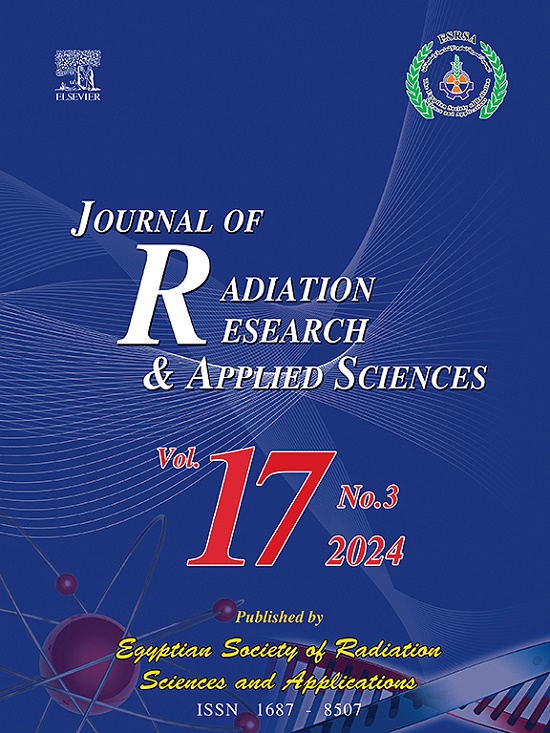Second-order based ensemble machine learning technique for modelling river water biological oxygen demand (BOD): Insights into improved learning
IF 1.7
4区 综合性期刊
Q2 MULTIDISCIPLINARY SCIENCES
Journal of Radiation Research and Applied Sciences
Pub Date : 2025-03-21
DOI:10.1016/j.jrras.2025.101439
引用次数: 0
Abstract
Generally, water bodies are composed of a small amount of organic matter that affects their quality for both domestic and industrial applications. Therefore, the current study involves modeling the Biological Oxygen Demand (BOD) using various physicochemical parameters. The study involves implementing different stand-alone, first-order, and second-order ensemble paradigms. Based on the quantitative and visualized results obtained from the current research, both stand-alone and first-order ensemble paradigms failed to model the BOD with reliable performance. Therefore, the current study proposed the first application of second-order ensemble machine for modelling BOD in the literature. The comparative performance of second-order ensemble paradigms indicates the strong ability of non-linear paradigms over linear methods. Whereby, 2′-AE with DC = 0.992, R = 0.996, RMSE = 0.136 and 2′-NNE with DC = 0.932, R = 0.966, RMSE = 0.248 depicts satisfactory and reliable performance in both the training and testing phases in modelling the BOD.
Therefore, the proposed technique can serve as a satisfactory approach for various hydrologists, policymakers, and decision-makers in the treatment of water from different water treatment plants.
基于二阶集成机器学习的河流生物需氧量(BOD)建模技术:改进学习的见解
一般来说,水体是由少量的有机物组成的,这些有机物会影响其生活和工业应用的质量。因此,目前的研究涉及使用各种物理化学参数对生物需氧量(BOD)进行建模。该研究涉及实现不同的独立、一阶和二阶集成范例。从目前研究的定量化和可视化结果来看,无论是单机模式还是一阶集成模式都不能建立可靠的BOD模型。因此,本研究提出了二阶集成机在按需需氧量建模中的首次应用。二阶集成范式的性能对比表明,非线性范式比线性方法有更强的能力。其中,DC = 0.992, R = 0.996, RMSE = 0.136的2 ' -AE和DC = 0.932, R = 0.966, RMSE = 0.248的2 ' -NNE在模拟生物需水的训练和测试阶段都表现出令人满意和可靠的性能。因此,所提出的技术可以作为一种令人满意的方法,为各种水文学家、政策制定者和决策者处理来自不同水处理厂的水。
本文章由计算机程序翻译,如有差异,请以英文原文为准。
求助全文
约1分钟内获得全文
求助全文
来源期刊

Journal of Radiation Research and Applied Sciences
MULTIDISCIPLINARY SCIENCES-
自引率
5.90%
发文量
130
审稿时长
16 weeks
期刊介绍:
Journal of Radiation Research and Applied Sciences provides a high quality medium for the publication of substantial, original and scientific and technological papers on the development and applications of nuclear, radiation and isotopes in biology, medicine, drugs, biochemistry, microbiology, agriculture, entomology, food technology, chemistry, physics, solid states, engineering, environmental and applied sciences.
 求助内容:
求助内容: 应助结果提醒方式:
应助结果提醒方式:


